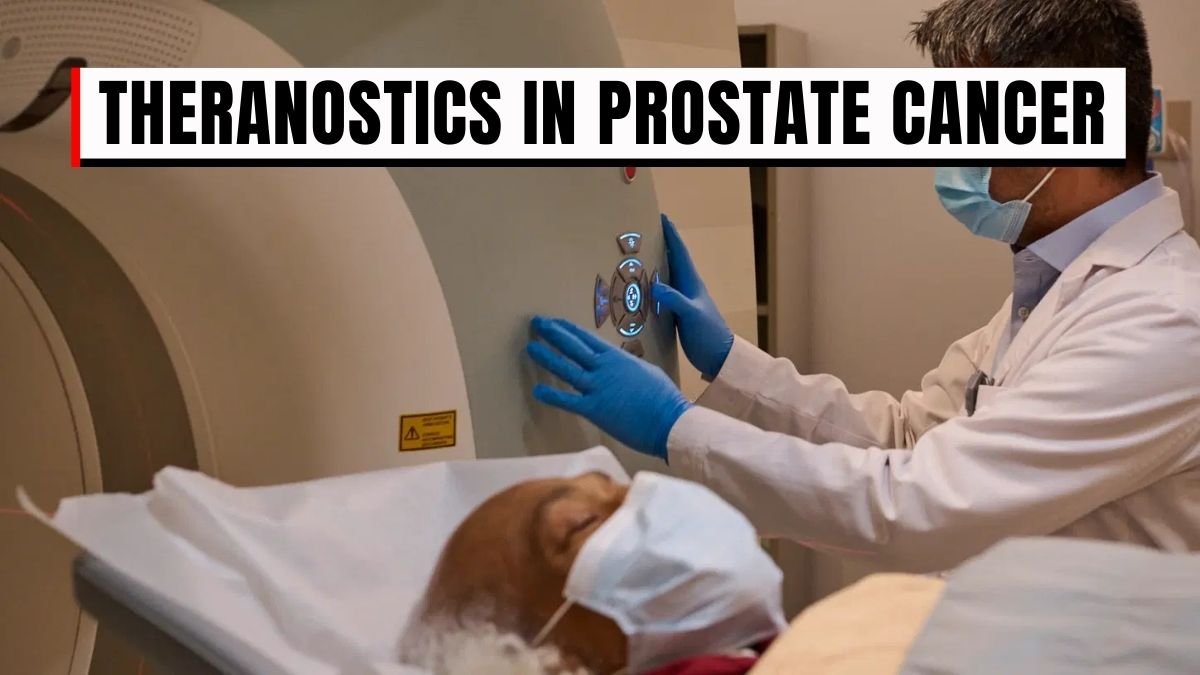Theranostics in Prostate Cancer: Cancer is a disease that not only affects the body of the patient but also his mental and social life. Prostate cancer in men is one of the fastest growing health problems worldwide. This disease is relatively easy to treat in the initial stages, but when it reaches an advanced stage and spreads to other parts of the body, its treatment becomes extremely challenging. In such circumstances, modern technology called Theranostics has given a new direction to medical science. This technology combines both diagnosis and treatment into a single process, providing personalized treatment to patients.
What is theranostics and its process
Theranostics is a medical method in which cancer is detected using radioactive isotopes and then treated with the help of the same isotopes. In the case of prostate cancer, this technique targets prostate-specific membrane antigen i.e. PSMA. PSMA is a protein that is present on cancerous prostate cells in many times more quantity than normal cells.
During diagnosis, isotopes like gallium-68 are used, which are injected into the patient’s body. These isotopes stick to the cancer cells and the exact location and spread of the disease becomes visible in PET or CT scan. After this, for treatment, more powerful isotopes like lutetium-177 or actinium-225 are given in place of gallium-68. These reach the cancer cells and release radiation on them and destroy them. The special thing is that this radiation is limited only to the targeted cells and healthy tissues remain safe.
Latest research and progress
Lutetium-177 based theranostic therapy has become a major option for the treatment of advanced prostate cancer today. Several studies have proved that it increases the life expectancy of patients and also reduces their symptoms. Its side effects are less and tolerable compared to traditional chemotherapy.
In addition, research is also going on on targeted alpha therapy based on actinium-225. This technology releases highly powerful radiation over a very short distance, which can destroy cancer cells even more effectively. Although its production is complex and expensive, it can become an important means of cancer treatment in the future.
Many studies are also indicating that theranostics can be more beneficial to use in the early stages of cancer. If it is applied before chemotherapy, patients can get relief faster. Similarly, new PSMA-targeted agents are being developed that can identify cancer cells with more accuracy. This has made imaging technology more sensitive and the disease can be detected with greater clarity than before.
Benefits for patients
The biggest benefit of theranostics is that it increases the life expectancy of patients. This technology brings new hope for patients who have limited options left. This treatment is completely targeted and personalized, so it focuses only on cancer cells and healthy tissues are not affected.
It also improves the quality of life of patients. There is a reduction in pain, fatigue and other symptoms. Also, it is a systemic treatment, which means that it can reach and destroy cancer cells spread throughout the body. This feature makes it different from local radiation therapy which is limited to only one place.
Challenges and limitations
Even though theranostics is proving to be a revolutionary technology in the treatment of prostate cancer, there are many challenges in front of it. Its biggest problem is availability and cost. The production of radiopharmaceuticals is difficult and expensive and requires special infrastructure and trained specialists. This is the reason why this treatment is not yet easily accessible to every patient.
Apart from this, regulatory barriers also create obstacles in the widespread use of this technology. Many types of approvals have to be taken to adopt any new medical method and this process is often time-consuming. As a result, the treatment reaches the patients late.
Conclusion
Theranostics has ushered in a new era in the treatment of prostate cancer. This technology carries both diagnosis and treatment together and provides treatment to every patient at a personal level. This increases the lifespan of patients, improves their quality of life and also limits side effects.
However, challenges such as its cost, production and regulatory barriers still remain. But given the continuous progress of medical science, it can be expected that in the coming time theranostics will become more accessible and will become the main means of treatment from early to late stages of prostate cancer.

